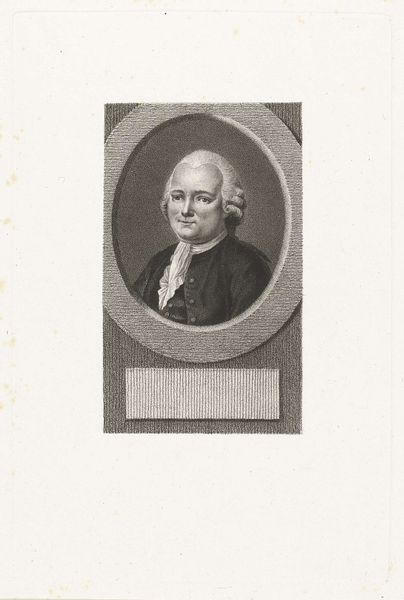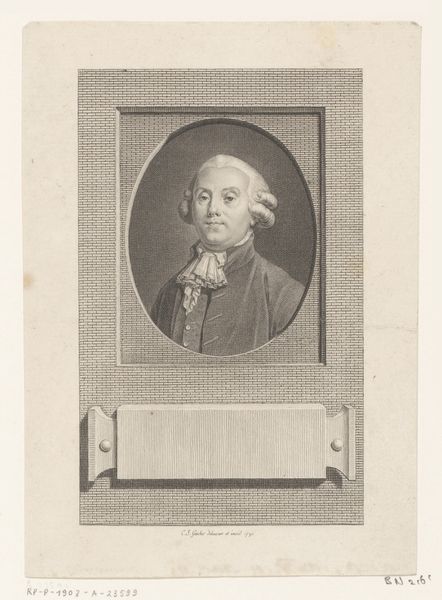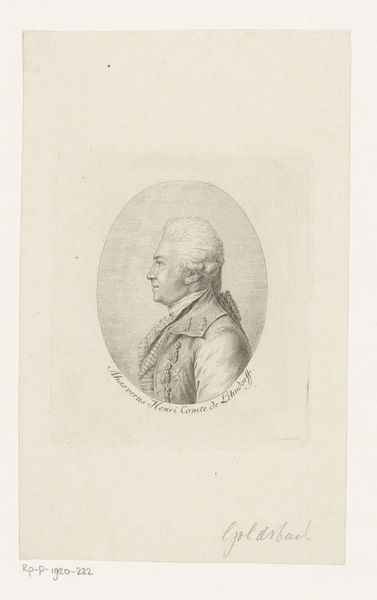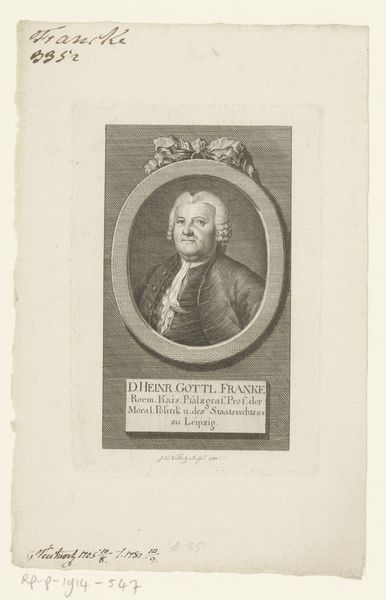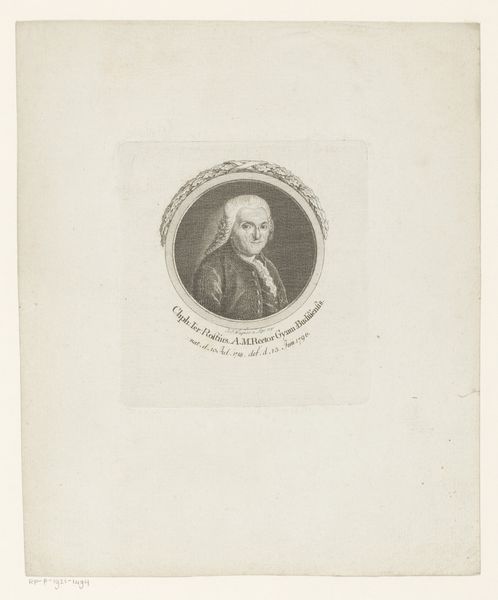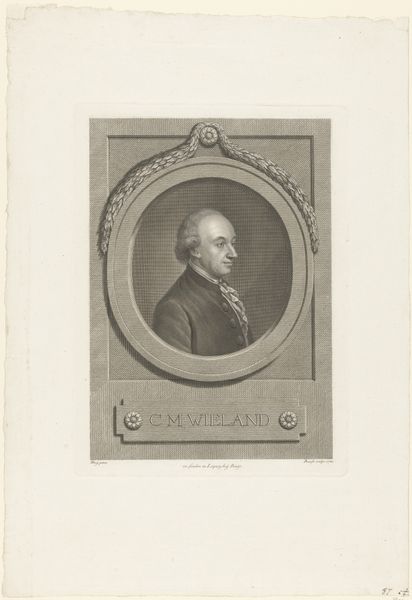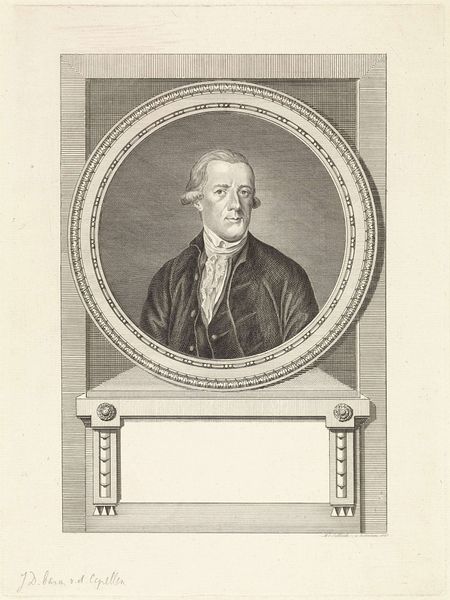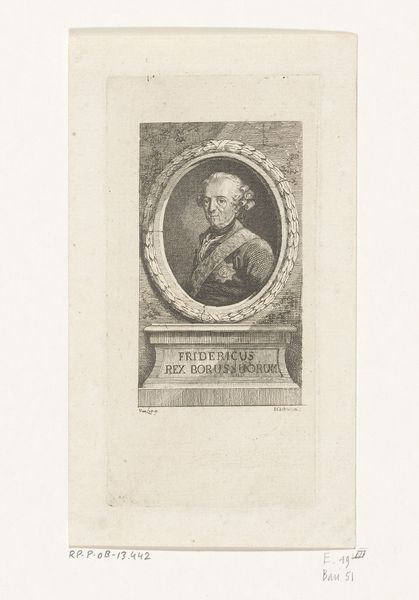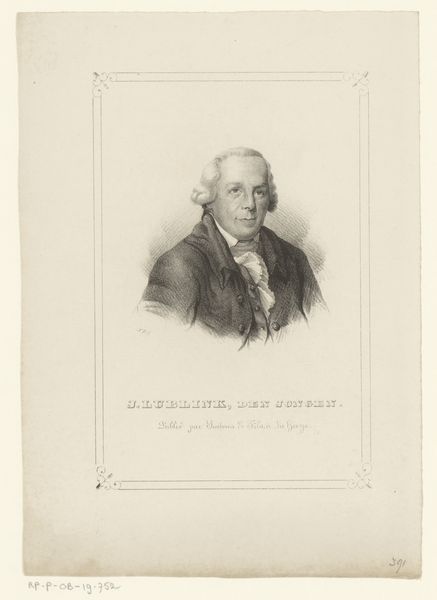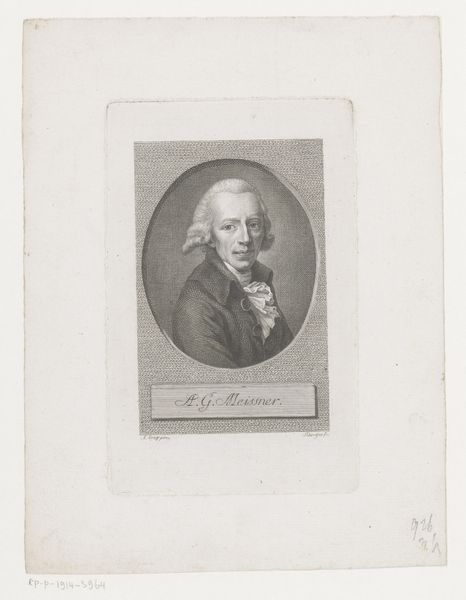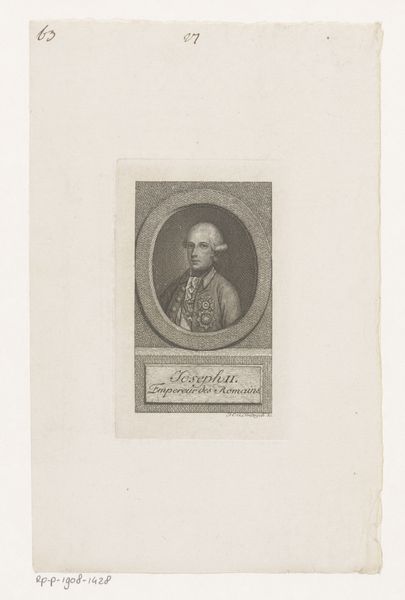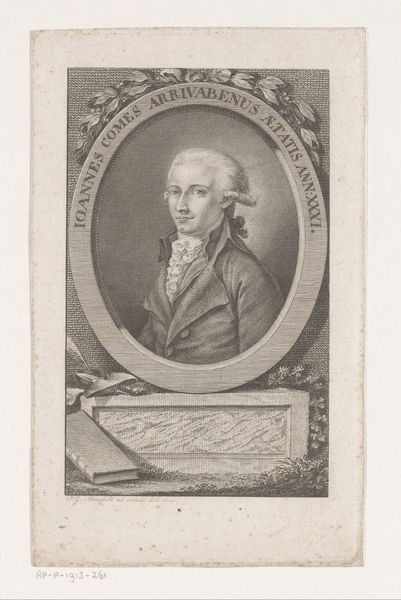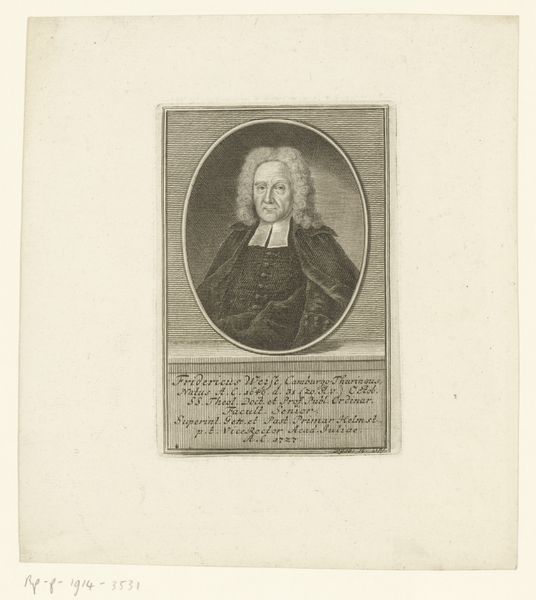
print, engraving
#
portrait
#
pencil drawn
#
neoclacissism
#
light pencil work
# print
#
pencil sketch
#
old engraving style
#
pencil drawing
#
pencil work
#
engraving
Dimensions: height 127 mm, width 86 mm
Copyright: Rijks Museum: Open Domain
Editor: So, here we have a portrait of Johann Georg, ridder van Zimmermann, created between 1759 and 1815 by Heinrich Pfenninger. It's an engraving. I'm struck by the formality of it – very clean lines, quite austere. What do you see in this piece? Curator: For me, this engraving is a fascinating glimpse into the social and political structures of its time. While seemingly a straightforward portrait, it raises questions about representation, power, and identity. This image operates within the context of the Enlightenment and emerging ideas about individuality, but who got to have their individuality recognized and memorialized? Who was deemed worthy of portraiture, and what does that tell us about societal hierarchies? Editor: That's interesting, I hadn't considered that aspect of who gets to be represented. So it's not just about capturing a likeness? Curator: Not at all. Think about the deliberate choice of Neoclassicism as a style – that harks back to the Roman Republic and its associations with civic virtue. And, ridder van Zimmermann," a knight…what power structures does that suggest? His dress and bearing are coded signs of class and status. What impact do these rigid hierarchies have and who is deemed invaluable within this space? And of equal concern, what space are people being removed from to make room for Zimmerman and those of similar stature? Editor: So by examining those cues, we can start to unpack the socio-political landscape. Curator: Exactly. It invites us to critically examine the ways in which identity is constructed and performed within specific historical contexts. I’d invite us to wonder - whose gaze is being prioritized here? Editor: This makes me realize there’s so much more than just the image itself. Thinking about art in the social context is crucial. Curator: Precisely. It's about disrupting traditional narratives and reclaiming space for marginalized voices in art history. Editor: Thanks, I am coming away from this looking at art, and the world, quite differently!
Comments
No comments
Be the first to comment and join the conversation on the ultimate creative platform.
